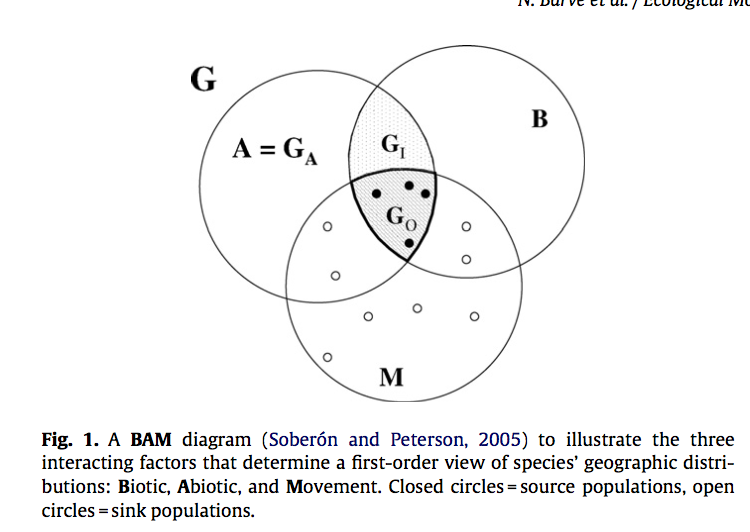Barve, Narayani, et al. “The crucial role of the accessible area in ecological niche modeling and species distribution modeling.” Ecological Modelling 222.11 (2011): 1810-1819.
doi:10.1016/j.ecolmodel.2011.02.011
Conceptual biases remain little explored in broad-scale ecological niche modeling and species distribution modeling. Species can respond environment in diversy ways: ecological niches may evolve or remain conserved. According to the conceptions in the BAM diagram (Fig 1), the region where species can be found is the intersection of A (environmental factors with values not dependent on species population dynamics, B (sets of variables that are dependent on species population), and M (regions that are accessible by the species but are unrelated with A). Region M depends on opportunities for and constraints on movements of species and is often not included in modeling efforts. Barve et. al. examined the conceptual and empirical reasons behind the choice of study area extent and presented 3 approaches for M estimation: 1. Biotic regions. Regions within which a species is known to occur; 2. Niche-model-based regions. The reconstructed historical distributions of species from models based on their current ecological niche characteristics; and 3. Full dynamic dispersal model, which takes into consideration exolicitly the spatially path-dependent nature of effects of environmental change. They asserted that the accessible area over relevant time periods are the most appropriate for model development, testing, and comparison. Although Barye et. al. emphasized on estimating the set of areas that species were sampled for niche modeling, this idea also has implications for biogeography, macrogeography, and phylogeography.
